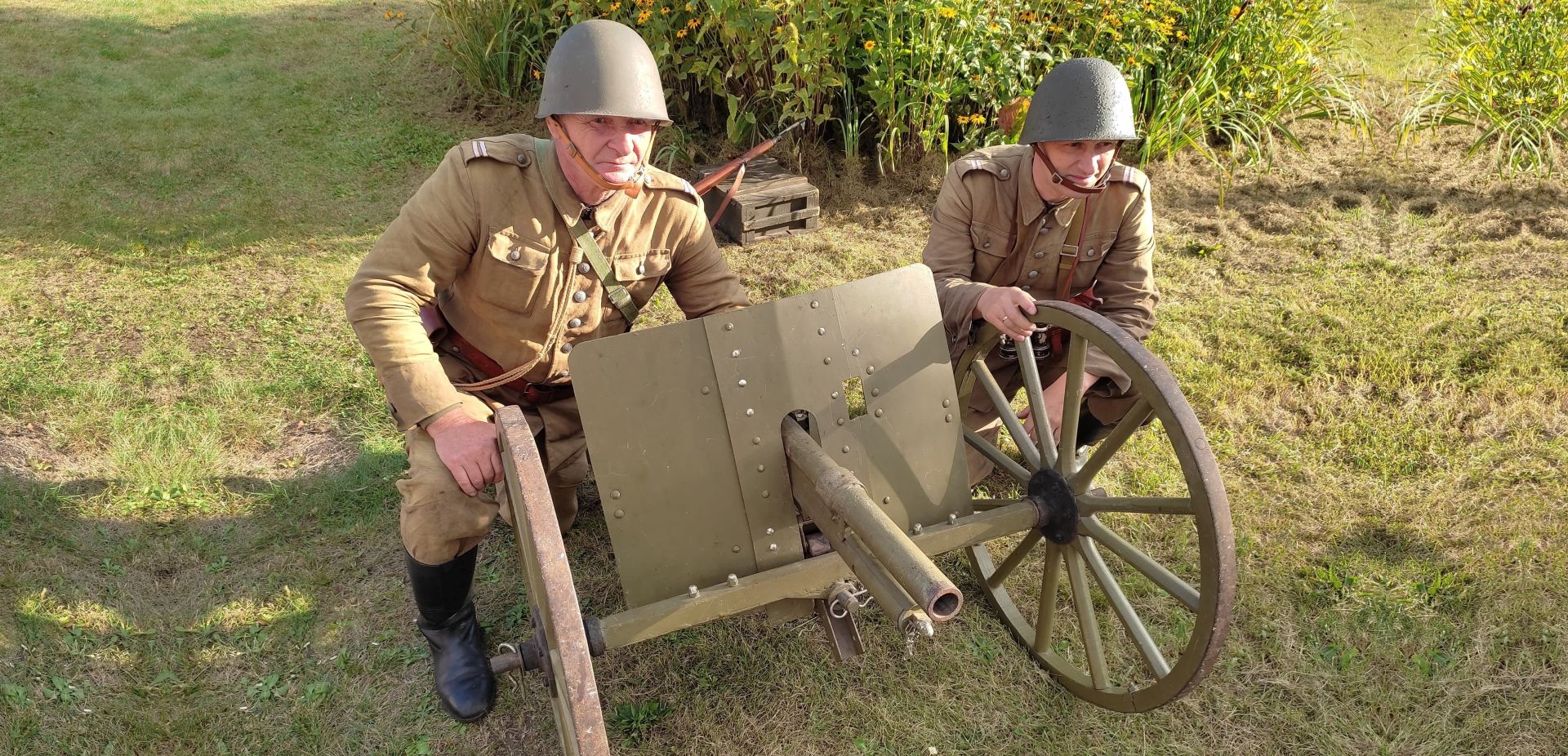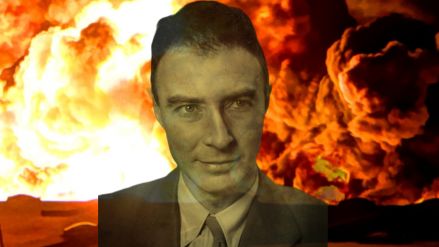Every year, on the fields of Grunwald, which have not existed for centuries, Polish-Lithuanian and Teutonic knights fight against each other. They all look more realistic than those of 1410. It’s pretty much the same with reenactments of way more contemporary battles. Last year’ reenactment of the battles on the Warta River in 1939 brought together as many as 27 historical reenactment groups – in total: over 200 people, 4,000 projected cartridges and 80 different explosions.
It’s more than a passion. Reenactors aren’t actors who play one person today, and someone else tomorrow. They actually impersonate their predecessors, nay they try their best to reproduce the soldiers of the past and to do it perfectly. Everything is important: right uniform cut, proper shoes, regulation equipment. It can be assumed with all likelihood that a pre-war officer looking at those reconstructing the Polish Army of 1939, wouldn’t reproach them with anything. Perhaps only that their weapons, though real-looking, won’t shoot…
Riflemen from Grajewo
Groups reenacting pre-war, Polish troops operate practically all over the country, although most often they sprang up where infantry or cavalry regiments had their headquarters before WWII. One of them is Grajewo, a small town (22,000 inhabitants) situated near the border between Podlachia and Masuria. The 9th General Kazimierz Pułaski Mounted Rifles [9 Pułk Strzelców Konnych – 9 PSK] had been stationed there since May 1924. In September 1939 this regiment fought within the Podlaska Cavalry Brigade, gaining renown, i.a. entering Prussian territory. Having gone to battle in Podlachia, the 9 PSK retreated to Polissia, fought at Kock and eventually capitulated – together with other troops commanded by gen. Kleeberg – on October 6. The regiment was reconstituted as part of the Home Army and its soldiers (partisans, of course) fought a few battles against the Germans.
Our group has been in existence for almost 20 years – says Grzegorz Marciniak, leader of the 9th Mounted Rifles (historical) reenactment group. People interested in the town’s history came along, some of them were strolling with metal detectors before… We founded the Society of Friends of the 9 PSK, and then our group as its branch. And so we began to operate… – he recounts.
Today they are able to recreate not only the Mounted Rifles which constituted – along with the Uhlans and Cheavu-légers – a substantial part of the pre-war Polish cavalry units. If necessary, they also act as Home army soldiers or even as a motorized section of the German Wehrmacht. They have access to a considerable number of weapons although these are all non-shooting replicas. The Polish machine gun is “gasified” (it produces a shot-like sound thanks to a special construction that uses gas), shoots with a sonorous bass voice, while the replica of the hand machine gun has slightly higher tones. Both look genuine. Both look genuine. The “Germans” may drive a replica of the Kfz 13 armoured vehicle, i.e. the older, pre-war version, which nonetheless was in service that September.
 SIGN UP TO OUR PAGE
SIGN UP TO OUR PAGE

It’s not easy to acquire such equipment. Anyway, being a reenactor also takes a lot of money. – A fully equipped mounted rifleman’s uniform, without a horse of course, costs between 5 and 6 thousand zlotys – says Grzegorz Marciniak. The uniform alone it’s about 1200 zloty, the boots – officer’s boots, worn by officers of all arms including cavalrymen – can cost even more. And a soldier should have two sets of uniforms (field and service), while an officer should have even three, because he also needs a gala uniform. So the hobby tends to be on the expensive side…
Soldiers of the Border Protection Corps from Osowiec
The Osowiec fortress, or rather its remnants, is located no more than 24 kilometres east of Grajewo, near the road to Białystok. It was built in the second half of the 19th century by the Russians, it was supposed to protect them from an expected German attack from East Prussia. In 1914 it withstood for several months and even survived a gas attack, although the Russians didn’t have gas masks at their disposal at the time. It wasn’t until August 1915 that the army was evacuated, partially destroying the fortifications. During the inter-war period the 42nd Infantry Regiment was stationed here, it was also the seat of the KOP Central Non-Commissioned Officers School. In September 1939 the Germans simply bypassed Osowiec, whose garrison later withdrew.

 SIGN UP TO OUR PAGE
SIGN UP TO OUR PAGE
 It’s not easy to acquire such equipment. Anyway, being a reenactor also takes a lot of money. – A fully equipped mounted rifleman’s uniform, without a horse of course, costs between 5 and 6 thousand zlotys – says Grzegorz Marciniak. The uniform alone it’s about 1200 zloty, the boots – officer’s boots, worn by officers of all arms including cavalrymen – can cost even more. And a soldier should have two sets of uniforms (field and service), while an officer should have even three, because he also needs a gala uniform. So the hobby tends to be on the expensive side…
It’s not easy to acquire such equipment. Anyway, being a reenactor also takes a lot of money. – A fully equipped mounted rifleman’s uniform, without a horse of course, costs between 5 and 6 thousand zlotys – says Grzegorz Marciniak. The uniform alone it’s about 1200 zloty, the boots – officer’s boots, worn by officers of all arms including cavalrymen – can cost even more. And a soldier should have two sets of uniforms (field and service), while an officer should have even three, because he also needs a gala uniform. So the hobby tends to be on the expensive side…




